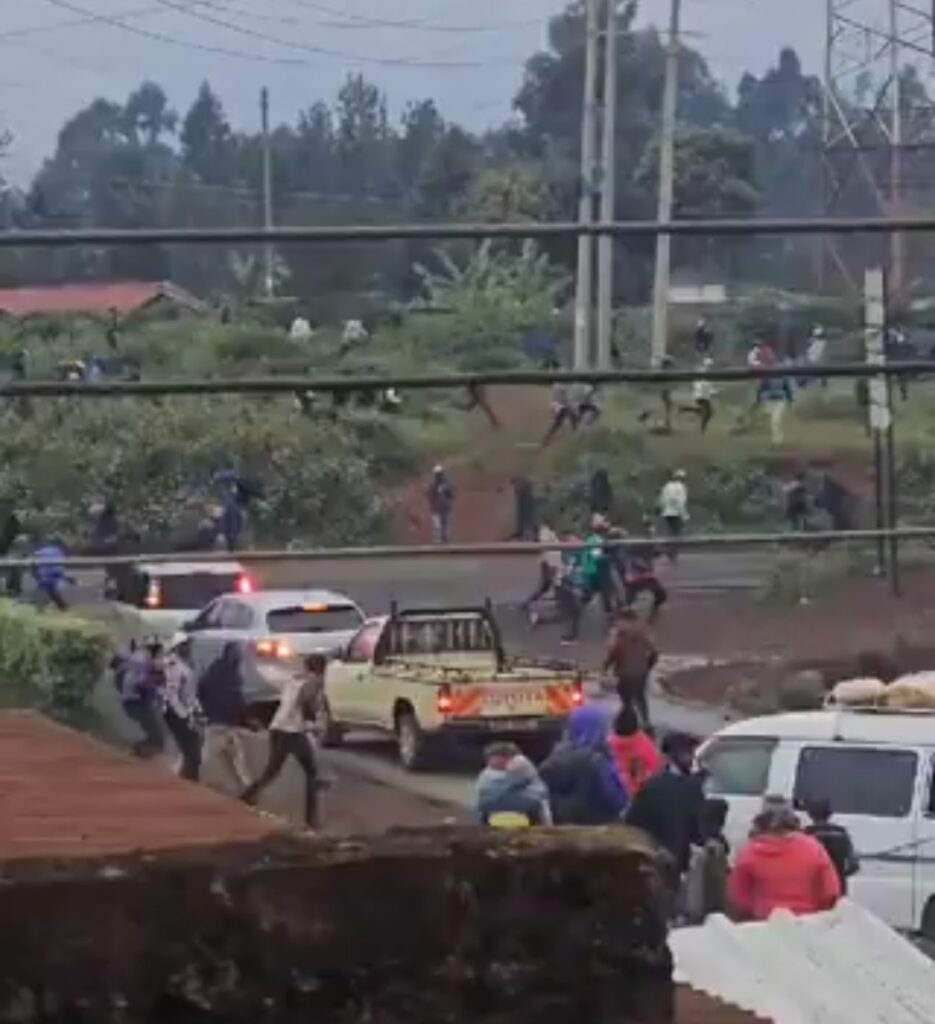In the heart of Karatina, what started as a peaceful protest quickly turned into a chaotic scene as members of Generation Z took to the streets to voice their discontent with the government.
The air was thick with tension as hundreds of young people, armed with placards and an unyielding determination, confronted the police.
The authorities, initially confident in their ability to control the situation, were soon overwhelmed by the sheer number and fervor of the protestors.
As the crowd’s energy surged, the officers found themselves outnumbered and struggling to maintain order.
The protestors, driven by frustration and a desire for change, pushed forward, their chants growing louder and more synchronized. The police, unable to quell the rising tide of discontent, were forced into a hasty retreat.
In scenes reminiscent of warthogs fleeing from a predator, the officers scrambled to safety, their once authoritative presence reduced to panicked flight.
The streets of Karatina echoed with the sound of running feet and shouted slogans.
The Gen Z protestors, emboldened by their success, continued to press forward, their unity and resolve creating an unstoppable force.
The government’s attempts to silence their voices had only served to amplify them, turning a local demonstration into a powerful symbol of resistance and the call for accountability.
Amid the chaos, stories of bravery and defiance emerged. Young leaders within the crowd took charge, organizing their peers and ensuring that their message remained clear and focused.
The protest, though chaotic, was not without purpose. It highlighted the growing disconnect between the government and the younger generation, a rift that had been widening for years.
The events in Karatina served as a stark reminder that the voices of the youth, when united, could not be ignored or dismissed.


